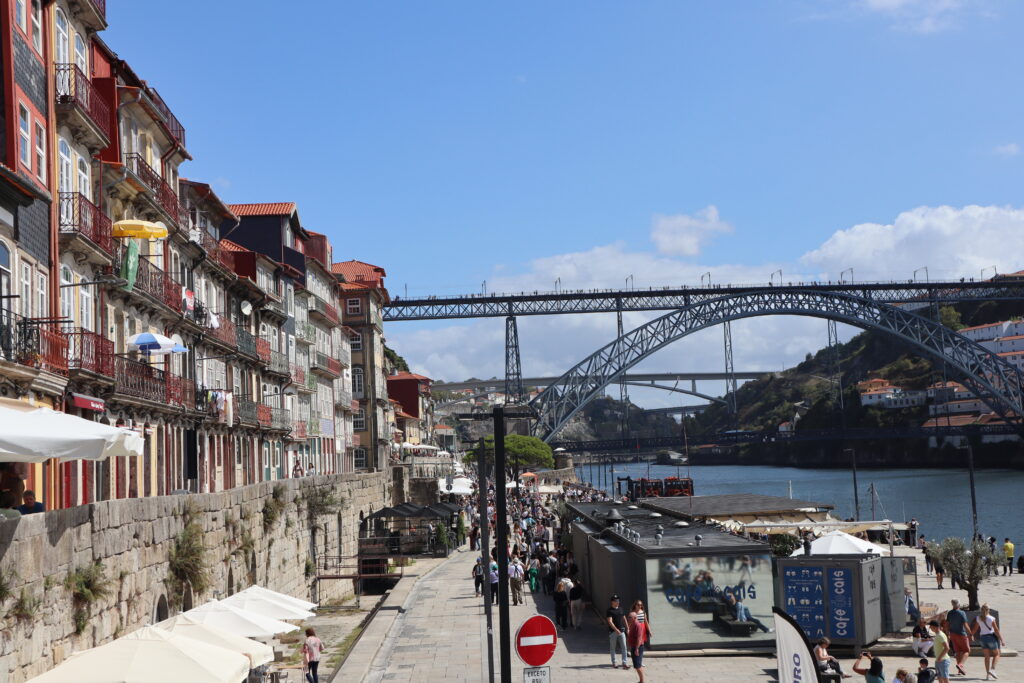
Porto sits on the Douro River, just a few miles from the Ocean, but it doesn’t feel like it. The hills of the city provide great views, but the city also creates views of its own. The city is known for wine (especial sweet, fortified Port wine), but has a surprising number of craft beer breweries (try the Lupum-Pühaste Imperial stout!). It is home to 13 universities—with a bit of a Harry Potter vibe—but a population of only 215,000.

Because of the up and down of the hills, church towers are often disproportionately tall. That way they can be seen from a distance. The Douro River, once a major trading port, now serves the god of tourism. A steady stream of boats make run up and down the river, from just short of the ocean, to where ever the 6th bridge is (that I learned from the signs advertising river tours of the six bridges). The Douro River valley continues to produce great wine.
Architecturally, Porto is very interesting. I noticed it the moment I stepped out of the São Bento railway station, and the view was masked by a construction fence. Oh, and don’t ask how to pronounce “São Bento”. Every time I think I have it right, I am disabused. You know nothing, Jon Snow!

The key to Porto’s architectural beauty is its lack of any coherent planning. And, yes, I like that a lot! Buildings sitting side-by-side, rarely share architectural… well… anything. Styles and heights? Whatever. Window sizes, shapes and levels? Whatever. Colors? Whatevs. Or better yet, look at the neighbor and then build something completely different. Porto is anything but cookie cutter. And that is all the more interesting.
Another interesting thing about Portuguese architecture is the use of tiles on the outside of the buildings. Makes a lot of sense: they are colorful and waterproof. They last longer than paint, and can added dimension to an otherwise flat wall. Downside is that they are hard to install, and it can look bad if a few fall off. But all of that can be said about bathroom tile.
Let’s get back to the wine. It’s why you’re still ready, after all. Portugal has 14 wine regions. There aren’t a lot of rules for the wine regions. Go ahead, mix that with this. We don’t care (much). And then there are the 31 Denominação de Origem Controlada (DOC). In the DOCs, wines are controlled by area, and variety, and quantity.
The Douro DOC is centered along the Douro River, and is home to Port wine. If one time you have tried Port, you didn’t like it. If you tried it twice, it was OK. Thrice? You ordered another bottle. It is strong and sweet, and takes a minute to get used to. But, after that, look out.

What is Port? Here’s what the Wine Enthusiast has to say: Port is a Portuguese fortified wine that is made by adding distilled grape spirit, usually brandy, to a wine base. The addition of the high-alcohol spirit stops fermentation and “fortifies” the wine. Port is made in Portugal’s Douro Valley. Much like how Champagne can only be called such if it’s from the Champagne region of France, only wines produced in the Douro Valley can be labeled Port.
I have counted 7 different styles of Port. There might be more; but if there is, I wasn’t able to count past seven. Be sure to try the ‘white’ port.

